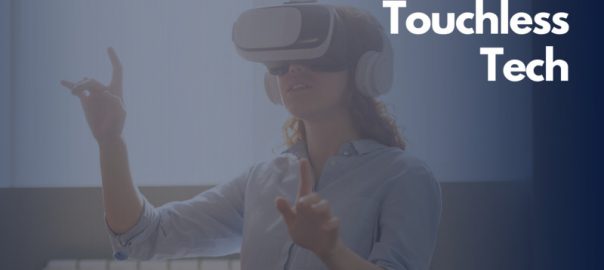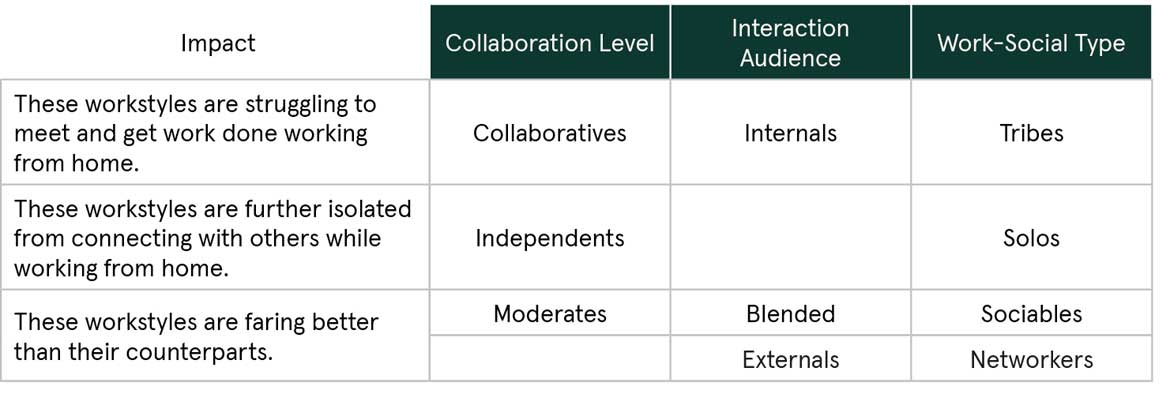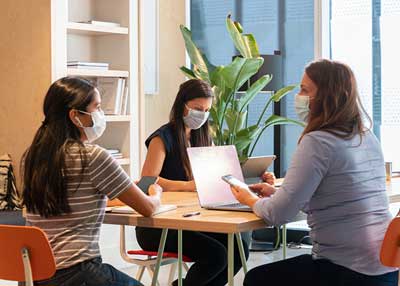It’s Trade Jim, but not as we know it!
The escalation of COVID-19 over the past weeks has had a profound impact upon every element of society. The word which has been quoted most in conversations I’ve had with colleagues, clients, friends and
family in recent days, is surreal – an overwhelming sense that those things that we once held as normal may never quite be the same again.
The decade post the global financial crisis has been a buoyant one for global trade, with trade growth consistently surpassing overall GDP growth in the 2010-2018 period. Over this time, global trade benefited
from a number of accelerators – the growth of emerging markets driving not just their own export volumes, but providing new markets for others to serve their growing industrial and consumer bases; the
on-set of the information age which made it easier for exporters to identify markets for their goods, as well as increasing global connectivity brought about by the growth in capacity and routes within the global
travel transport sector.
The last couple of years had presented a reality check; a slowing in global growth, a ramping-up of trade disputes, and a populist attach on the benefits of globalism.
And then COVID-19 arrived.
We are beginning to see changes in behaviour that we believe may be long-lasting, and political and policy changes taking shape that we predict will fundamentally re-shape international trade in the post COVID-
19 world.
Below are initial OCO’s predictions. We’ll doubtless evolve and refine these as we move through this period. We don’t expect things to be the same again.
Love thy neighbour
For several centuries, international trade was influenced by two predominant factors: cultural association and proximity between trading partners. Globalisation of the last quarter century changed that, and
supply chains have increasingly lengthened in a relentless drive to reduce costs.
Post COVID-19, we predict companies will actively seek to shorten supply chains to manage risk, and to enable them to reinstate elements of both flexibility and control (e.g. intellectual property) that have
been sacrificed. Whilst globalisation will remain, we expect to see greater regionalisation of supply chains.
Drown out the crowd
Fuelled by lower costs of international travel, visitor experiences more akin to rock concerts, and relentless marketing targeting to our innate FOMO (fear of missing out), the global trade show circuit has
become must-attend events.
Despite the hype, our client’s experiences are invariably mixed about trade shows. Too many times, clients have commented that desired meetings didn’t take place, the volume of deals weren’t as expected and
the total cost in time and expenses was not worth it. As the trade show industry is shuttered for the foreseeable future, we expect it to play a smaller role post COVID-19.
Trade goes Tinder
There is a significant opportunity to leverage and interpret data, connect buyers and sellers digitally to create a global marketplace that would be substantially more efficient and drive better outcomes for
trading partners. We estimate that such a system could improve margins for companies in the post COVID-19 world.
You got a friend
In the new world, we predict collaborations will increase. This will likely take multiple forms. The current emphasis on ventilator production demonstrates that companies can support each other and create value
through partnerships, IP and technology transfer as much as the physical export of product. We also predict that point-to-point collaborations between regions or sector clusters will increase as exporters
embrace shortened supply chains and a more targeted. In fact, OCO are already seeing examples of these collaborations emerging between clients in all parts of the globe.
Over the coming days and weeks, we will be sharing insights from across our global markets as developments progress, on our latest page and on social.
The Future Of International Trade Is Far From Terminal
It would be easy and almost justified to give up on international trade with the dark clouds of Brexit hovering above and the distant thunder of Trump’s tariffs reverberating ever louder day by day. With all
the uncertainty, it’s not without merit to ask if the return is worth the risk. Well, fortunately, I have been lucky to have some recent experiences that reinforce why global trade is good for the soul as well as for
business.
The benefits of market diversification, currency hedging, economies of scale and others are well documented, but the human element of personal enrichment is mostly overlooked. I hope by sharing
some of my recent experiences, it will shine some rays of light through the grey skies and bring back some meaning to the madness.
36 hours in Tunis airport transit lounge. A kindly reminder to renew my seldom used Irish passport! Suited and booted but confined to a transit lounge with metal benches for a bed and some fairly limited food options, it wasn’t the evening I had planned for! Yet from adversity came light. On hearing my situation, one of my clients in Tunis who had just returned from Tokyo that day, promptly made up some sandwiches and made his way to the airport and got security to hand deliver them along with his coat, to serve as my blanket for the evening. A Lifesaver! I can’t imagine anyone doing the same at Heathrow.
In the same week, we secured a listing for a wonderful entrepreneur based in Tunis; Cotswold Fayre, a leading UK food distributor for independent retail stores. Having never exported before and selling primarily through her delightful shop, The CEO was naturally nervous about making this leap. We supported her through the registration process and the logistical challenges and in the end, she created the most elegant packaging for her delightful pates de fruits, coming to a shop near you this Christmas. Our support meant a lot to her, but really, we were the beneficiaries of seeing an entrepreneur grow in confidence and realise her potential.
In January, we started working with a small Irish business that is bringing digital transformation to how care is delivered to people with learning disabilities, helping them achieve independence and get into paid
work. A rather shocking statistic of only 1 in 4 school leavers with learning disabilities go onto further education and only 17% of people of working age are in paid employment. This must change. Our client’s
mission is to do just that and empower independence through technology. Clients like this don’t come along often enough and my team are personally invested in its success and delighted to be spreading the
word to companies, schools and colleges around the UK and soon into the US.
After just a couple of weeks of outreach, we secured our first sale. Call it good timing or good fortune, but it gave my team great satisfaction and showed just how powerful this solution can be in scaling
support for people with learning disabilities. Entrepreneurs on a mission, like CEO Lisa Marie, are inspiring. Started out of an emotional personal experience and driven by a very real global need, its life
affirming that ordinary people have the courage and conviction to do extraordinary things. And we are lucky to be part of the journey.
So, outside of Brexit, here are plenty of great things going on around the world and great people doing extraordinary things. Get out there and make an impact on the world, you will be rewarded.
Four Steps to Success for Investment Promotion Agencies in a Post COVID-19 World
This time last year, I was standing in front of my European colleagues in the conference room of a hotel in Strasbourg where we were hosting our annual corporate retreat. I was presenting insights and tips for
targeting investors from a North American perspective.
On one slide, I included quotes from two U.S. presidents, John F. Kennedy and Ronald Reagan. It was my mildly humorous attempt to illustrate the clash of cultures that I sometimes find between public sector
investment promotion agencies (IPAs), and private companies.
The quote from Kennedy was, “Ask not what your country can do for you – but what you can do for your country”. I explained to my colleagues that when talking to prospective investors, we should always be
thinking “Ask not what your company can do for your region, but what your region can do for your company”. The point I was trying to emphasize is that, over the course of talks with a company about
potentially setting up in your region, no matter how exciting the prospect of landing a headline-grabbing investment can be, you should be continuously articulating what your region can do for the company. How well you pay attention to a company’s needs during this process can make or break a transaction.
The second quote was from Ronald Reagan, who said, “The nine most terrifying words in the English language are: ‘I’m from the government and I’m here to help’”. The point I was making here was that the public and private sectors often operate with opposing priorities, budgets and timelines, which at times can produce reluctance from the private sector to collaborate with government entities.
Who could have predicted that one year after nonchalantly referencing these timeless quotes, we would see the Defense Against Production Act – a wartime statute – being implemented, with car companies like GM and Tesla shifting their production lines to make medical devices to help in the country’s response to a global pandemic?
Who could have predicted that, one year later, struggling industries around the world would be looking to governments for all the help they can get?
At some point in the future, we will be able to resume travel, return to restaurants, frequent sporting events and, of course, return to our offices. But what does a return to normal look like in the post-COVID-19 world? What does “business as usual” look like for investment attraction after the coronavirus?
In the short-term, companies are doing what they can to stabilize their operations, protect their workforce and retain customers. The travel and hospitality industries have been hit particularly hard as efforts to
stop the spread of the coronavirus have grounded 95% of flights.
Businesses from all sides of the economy are now having to plan for a different future. Investment promotion agencies should be no different.
With FDI likely to drop between 30% to 70% in 2020, what actions can IPAs take to mitigate the impacts of COVID-19 on global commerce? Several come to mind:
- Re-route tradeshow and travel budgets: UFI, the Global Association of the Exhibition Industry, estimates that more than 500 tradeshows have been cancelled globally. If, as many health experts believe, a vaccine is still 18 months away at the earliest, expect bans on large gatherings of people to continue well into 2021. Consider re-routing tradeshow budgets to other lead generation activities. When the public health crisis eventually eases, in-market visits with a scheduled itinerary of appointments with executives may be a more appropriate way to make the personal connections so vital to business recruitment.
- Pitch to companies less vulnerable to economic shock: S&P 500 companies now have a smaller cash buffer to support their borrowing than they did a decade ago. Companies who were already in a weakened cash position before the coronavirus are unprepared for the current lockdown and economic paralysis. Companies who have higher stockpiles of liquid assets are going to have more cash to invest.
- The sharing economy has been replaced by the isolation economy: The last thing anyone wants to do right now is share. While Uber, Airbnb and WeWork were the winners of the sharing economy, their business models make it difficult to adapt to our mandatory lifestyle shifts. On the other hand, the Isolation Economy is based on the principle that people need not travel to complete everyday activities. As everything from a visit to the doctor, a college lecture and a business meeting moves online, companies like Zoom, Microsoft Teams and Amazon are some of the clear early business winners in the pandemic. Focusing business development efforts towards companies that are related to delivery, home productivity, home entertainment, telemedicine, remote services, technology providers, 5G companies, security companies, or any other business that provides value to an increasingly static consumer, is encouraged.
To help you do this, OCO has created a Company Resilience Register, identifying groups of Agile Companies who have been able to switch their business models due to the crisis, and are likely to have the means to invest in 2020.
- Accelerate digitization: If your staff need to work from home for the foreseeable, how prepared are you? Can you have virtual meetings with prospective investors? Can you share screens, or documents for collaboration? At OCO we have developed a number of solutions to help our clients conduct virtual matchmaking meetings and missions during this time.
- Reinforce aftercare support for existing investors: Put more resources into helping existing companies expand in your market. Focus more on domestic investment attraction of US or international companies that are already in North America.
States and cities that implement smart and sustainable investment attraction strategies will see returns in growth, resilience, and competitiveness. Investment promotion agencies can use this period of social introspection to reflect on the way they interact, collaborate, create value, manage time and manage relationships with prospective investors. Those who can get ahead of the curve will emerge from COVID-19 be better-equipped to deal with what comes next. OCO stands ready to help.
Trade Without Travel
What a difference a month makes! Back in early March, the majority of us were still in our 9-5(ish) routine – sitting in traffic or shoving onto a packed subway car, to get to the office and greet our colleagues a
good morning. As the confirmed Coronavirus cases has climbed to over two million globally, empty streets and struggling businesses have decelerated the economy.
The COVID-19 pandemic has impacted much of our lives – from home schooling through to online grocery ordering and more baby boomers Snapchatting and TikToking than ever. It has also had serious impacts on international trade and global expansion. The World Trade Organization expects international trade to fall between 13% – 32% in 2020; global supply chains are struggling to find short-term solutions during this crisis, and short-term global expansion plans are being placed on hold.
However, the perpetual negative impacts from COVID-19 have ensured that most of us appreciate the technology in our lives. For those of us fortunate enough to work from home, our daily routine has changed from an overcrowded rush-hour commute to looking presentable enough for videoconferences and not being too embarrassed by the random passing by of a child or spouse in the background. Companies around the world have been leveraging Microsoft Teams, WebEx, Zoom, etc. to stay connected with colleagues during these socially distant times.
Here at OCO Global we are embracing the new normal of “Trade without Travel” and adopting virtual efficiencyto further expand digital transformation strategy for our clients across the world. For example, we are rolling out the concept of Virtual Trade Missions to many of our Economic Development Clients, enabling trade missions to take place at a fraction of the cost, in any country, at any time and with any buyer.
Virtual Missions still accomplish the same objectives of identifying international partners and customers and holding (virtual) in-person meetings. As 5G strengthens globally and we increase our trust in technology, digital innovation will impact the greater International Trade & Investment industry.
One of our UK clients, Boxmodel, has grown significantly in the US. Boxmodel are specialist software architects that deliver bespoke business solutions across the UK and beyond. Given the need for companies to undergo digital transformations in this new world, they are witnessing how organizations can gain a digital competitive advantage amidst this crisis.
Boxmodel CEO Alan Easton stated, “No business is going to be immune [to COVID] … in three months’ time, people will look back and see where they were faulty and not technologically driven. Organizations
should take this opportunity to review where there is a downfall in their business during this crisis and strategize how technology can be incorporated to improve the future business model”.
As we continue to appreciate the limited technology that is keeping our daily lives as normal as possible during the Coronavirus crisis, companies should use this time to plan digital innovation strategies for the future. For example: mitigating risk in the supply chain with 3D printing, using AI to improve customer experience for an international customer base, or even decreasing costs through Virtual Reality training. As Easton states, “having a digital offer enhances the overall offer”.
Trade without travel – reality or rhetoric?
COVID-19 has impacted how companies in every country serve their clients in markets worldwide. Government sponsored trade missions and private sector trade shows have been cancelled. 52%of exhibit managers have implemented virtual events. Corporate exhibit managers project more virtual/hybrid events, lower trade show attendance, fewer large/national events, and more small/regional events
International travel is down 90% and will not return to normal until 2023. Even if flights exist, quarantines in numerous countries for arriving passengers render international travel impractical. Yet, businesses must continue face-to-face conversations with international partners and customers.
When a vaccine is available and international travel resumes, business travelers will still be wary of taking unnecessary health risks. By that time, business executives around the world will have become
comfortable with conducting international business virtually as an efficient, effective means of business communication.
In short, changes in how businesses communicate internationally are here to stay.
In recent months, I have presented solutions for doing international business virtually to over a dozen U.S. state trade agencies that provide international business support to companies. Common questions being asked are: What virtual solutions exist? What is virtual matchmaking? How is virtual business conducted? And what are the benefits to companies that engage in international business virtually?
OCO’s experience over the past six months working with both companies and export agencies has confirmed that conducting international business virtually can be more efficient and more effective.
More efficient in that exporters can achieve the same level of vetting of potential partners/representatives via virtual tools as with traditional in-person, in-country meetings, and with less
costs and time constraints of a traditional international business travel.
More effective in that virtual business, done properly, results in more engagement by decisions makers.
The benefits for companies to conduct international business virtually include:
- More connections with more clients: In lieu of spending $5,000 for a weeklong trip, or $50,000 to attend an international trade show, an exporter can conduct regular visual check-ins with multiple clients.
- Expanded market coverage. In lieu of confining business to 2-3 countries due to market assessment costs, exporters can explore new markets cost-effectively.
- Higher value discussions emerging as norm. Deep discussions are no longer constrained to in- person meetings.
- Differentiator with competitors. Exporters that are adept at doing international business virtually distinguish themselves from their competitors.
OCO has prepared reports on best practices for conducting international business virtually, including digital platform comparisons, export licensing requirements, emerging cultural norms and more. Contact me at the link below to learn more.













